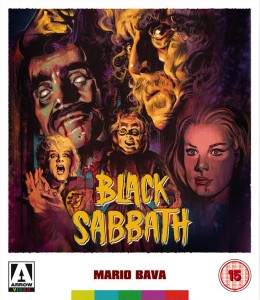 This is indisputably a classic and one that is every much so as the band who took them name from it. I think it is even fair to say that it is respected by horror film scholars as much as doomflare lovers of the Birmingham mob worship them musically. The temptation here is to combine the two and to litter this review with some of their song titles but that may well detract from the task at hand.
This is indisputably a classic and one that is every much so as the band who took them name from it. I think it is even fair to say that it is respected by horror film scholars as much as doomflare lovers of the Birmingham mob worship them musically. The temptation here is to combine the two and to litter this review with some of their song titles but that may well detract from the task at hand.
Directed by Mario Bava way back in 1963 three years after his other quintessentially superb chiller The Mask Of Satan, Black Sabbath followed on from a brief foray into peplum titles like Hercules In The Centre Of The Earth (1961) and came sandwiched between murder thriller The Girl Who Knew Too Much and spooky haunting ode ‘The Whip And The Flesh’ both made in 1963 too.
The film takes the form of the anthology and has three tales of terror that are all quite different from each other. These are introduced and finalised by Boris Karloff standing on a tripped out astral plane or dimension to the world of the dead perhaps. It is garish and striking as were many films of the time, happy to experiment in the use of colour.
First we have a typical thriller The Telephone which stars the gorgeous Michèle Mercier (also in Mask Of Satan and still acting today) as Rosy who is being terrified in her home by a mysterious caller. It really is a case of ‘Don’t Answer The Phone’ and terror mounts as she becomes more and more paranoid (had to get one in). Bava uses colour really strikingly in the luxurious one room setting that dominates most of the movie. In fact as there are very few participants acting in this part he uses the striking red bodied, black handset of the phone very much like a central character. It is not just the visual elements that are cleverly utilised as the fear mounts as Rosy cowers in terror. At times all you can hear is the ticking of the clock as she is informed she will be dead by dawn. This is a typical piece from the director who would go onto make the likes of ‘Blood And Black Lace’ leaving the watcher with plenty of questions as it places red herrings around and moves toward inevitable conclusion. Perhaps there is a slight lack of substance to this opening piece and I would certainly consider the next two as being mine and no doubt many others divided choice of favourite but it is involving and I have to say I really liked the noir etched soundtrack from Roberto Nicolosi.
The Wurdalak follows and is the historical and at times hysterical part of the trilogy based on a story by Tolstoy. Moving outside to a ruined castle, colour again gets the chance to shine as the red sky at night becomes more than just a shepherd’s delight to behold. What is a Wurdalak you ask? Well it’s rather more terrifying than a fairy wearing boots that’s for sure and it has put the fear of God into some villagers in 19th Century Russia where it is set. A knife is found by a travelling nobleman played by American actor Mark Damon and as he enters a sleeping village and spooky cottage he discovers that the body he found it in belonged to a nasty Turkish criminal. For some reason though the people around are not convinced that he is dead despite lack of head and put a sword through the heart for good measure. The Wurdalak is a bloodthirsty corpse we discover and it could now possess the man who killed the Turk, the father of the family that the nobleman is staying with. He is entranced by the gorgeous Sdenka (Susy Anderson) and does not intend being scared off but midnight is approaching and doom could well be about to descend. The fact that the father is played by a wild looking Karloff does not sway this notion in the slightest. Cold in tone, windswept in soundtrack and highly atmospheric, this tale of old legend and folklore puts a different twist on the vampire mythos and has many ‘classic’ scenes that one viewed will be hard to forget.
Finishing things off we have The Drop Of Water, which is the supernatural section of the film. I don’t care if you have become desensitised to shock cinema or not, one thing that I will say is that if you have not seen this before, despite the age of it, you will still shit the bed (if that is where you are watching it) at this ghastly story. A mad old cat lady in a huge neglected mansion has shuffled off this mortal coil and it is down to harassed nurse Helen Chester (Jacqueline Pierreux) to venture out into the stormy night to assist her preparation into the final veil. The old lady was a medium but death left her with a bit of a surprise it would seem as the curtain is whipped open around her bed and we see her horrifying expression. Yes you will gasp when you see it, the effect here is truly terrifying especially when we hear she died at a séance in a trance, scared to death by the dead as it were. Not that this stops her nurse from stealing a large ring from her ‘hand of doom’ and if you cannot guess what the outcome of this one is going to be, well you are frankly like the old lady, a bit of a dummy.
Naturally when the film was complete despite it being near perfect it was not good enough for the American powers that be who rescored it with a soundtrack by Les Baxter, changed the order of the three parts, replaced Karloff’s narrative and cut some gore and edited The Telephone segment to such an extent they completely changed the subplot. The only good thing about this is that Arrow have included both versions so you can check out the differences for yourself but I think it is more than fair to say that the original Italian version is by far the best one to come back for repeated viewings. Arrow have come up trumps no doubt appreciating that people may not want to view the two different versions completely they have exhaustively included as an extra a comparison piece illustrating both visually and aurally how the two different versions compare frame by frame.
Other extras on the disc include an audio commentary by Tim Lucas and an introduction from Alan Jones who mentions the changes to the two versions and surprises silly me with the fact that Alexei Tolstoy who I mentioned as being the muse of The Wurdalak did not actually exist, nor did the others who some say are credited for the original stories. There’s a rather fascinating interview with Mark Damon who drops a couple of bombshells about his career in Hollywood and Italy such as the fact he was responsible for directing House Of Usher (1960) not Corman and that he introduced Clint Eastwood to the unknown at the time Sergio Leone. He also talks about his role as producer. The second film he did in this capacity being Robert Aldritch’s 1977 adaptation of one of my favourite books The Choirboys written by Joseph Wambaugh and some 70 other features from 9 ½ Weeks (1986) to Monster (2003). Yet again with added trailers and TV and radio spots and the double sided artwork this completely makes any other DVD version of the film defunct and presents it for the first time ever on Blu-Ray making this pretty much an essential purchase!
Pete Woods
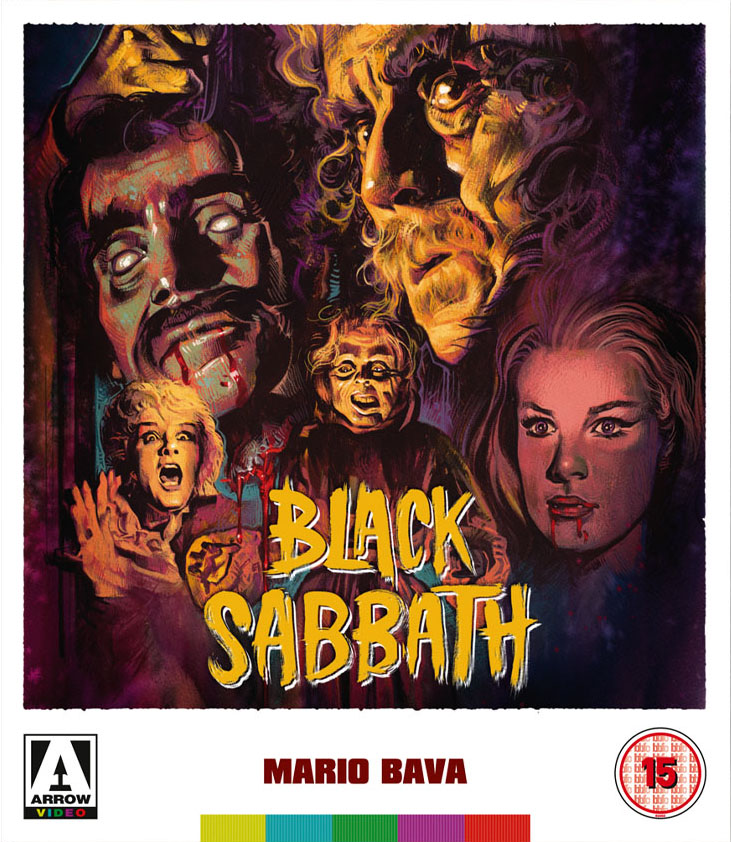
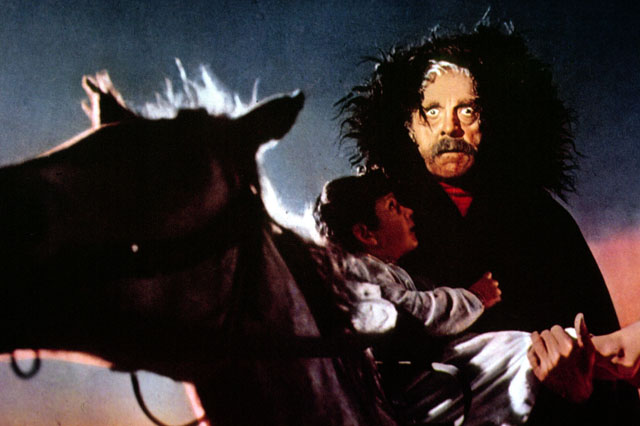
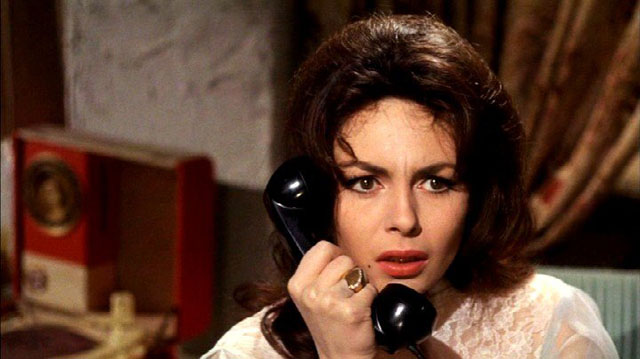
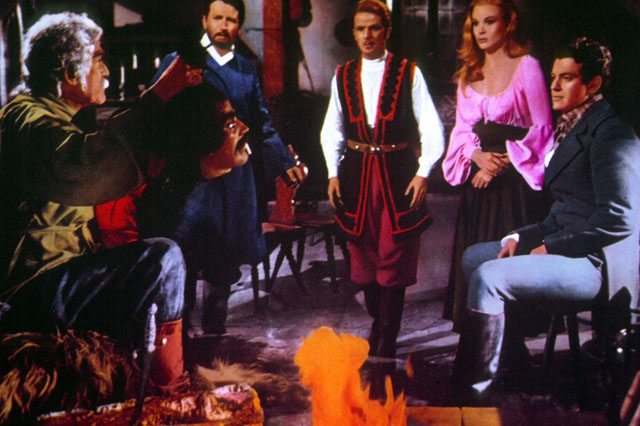
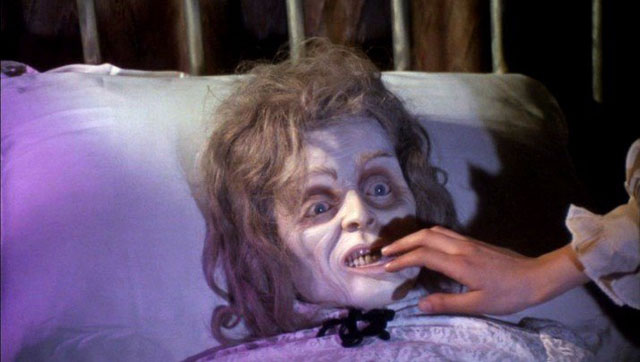
13/05/2013 at 3:54 pm
Nice review. Think it is creeping towards the time I’ll have to invest in a blu-ray player if I want to get all these releases.